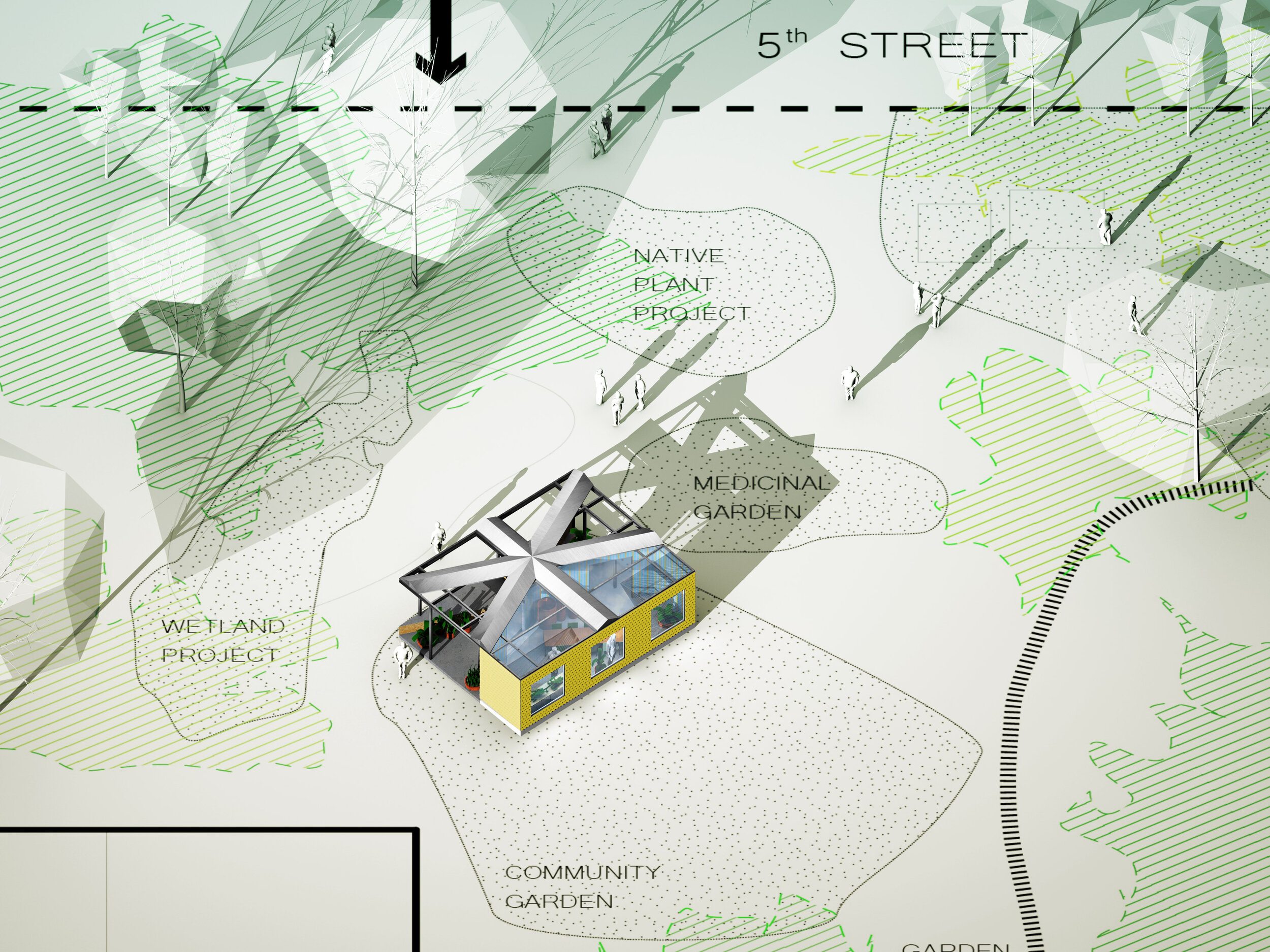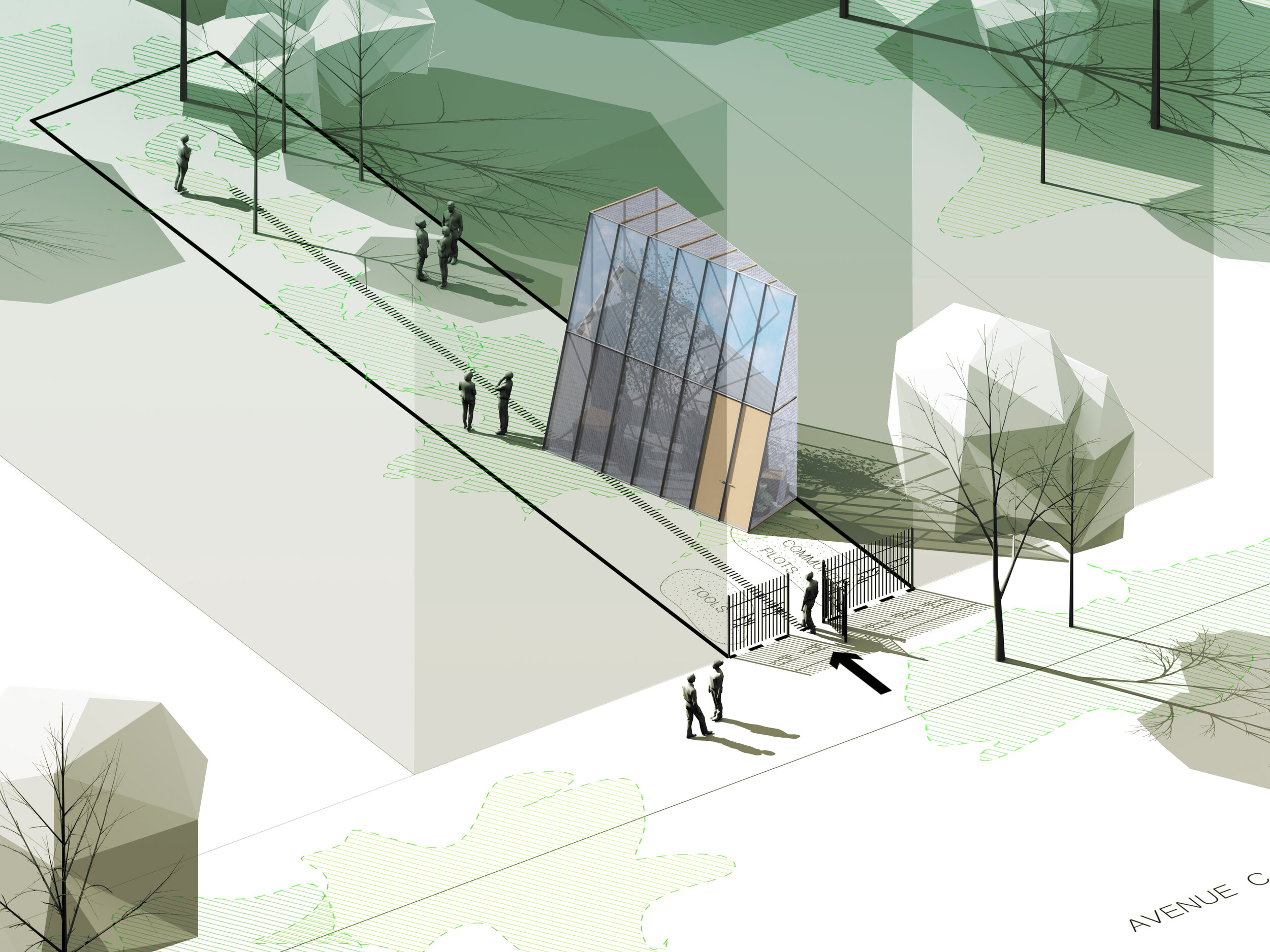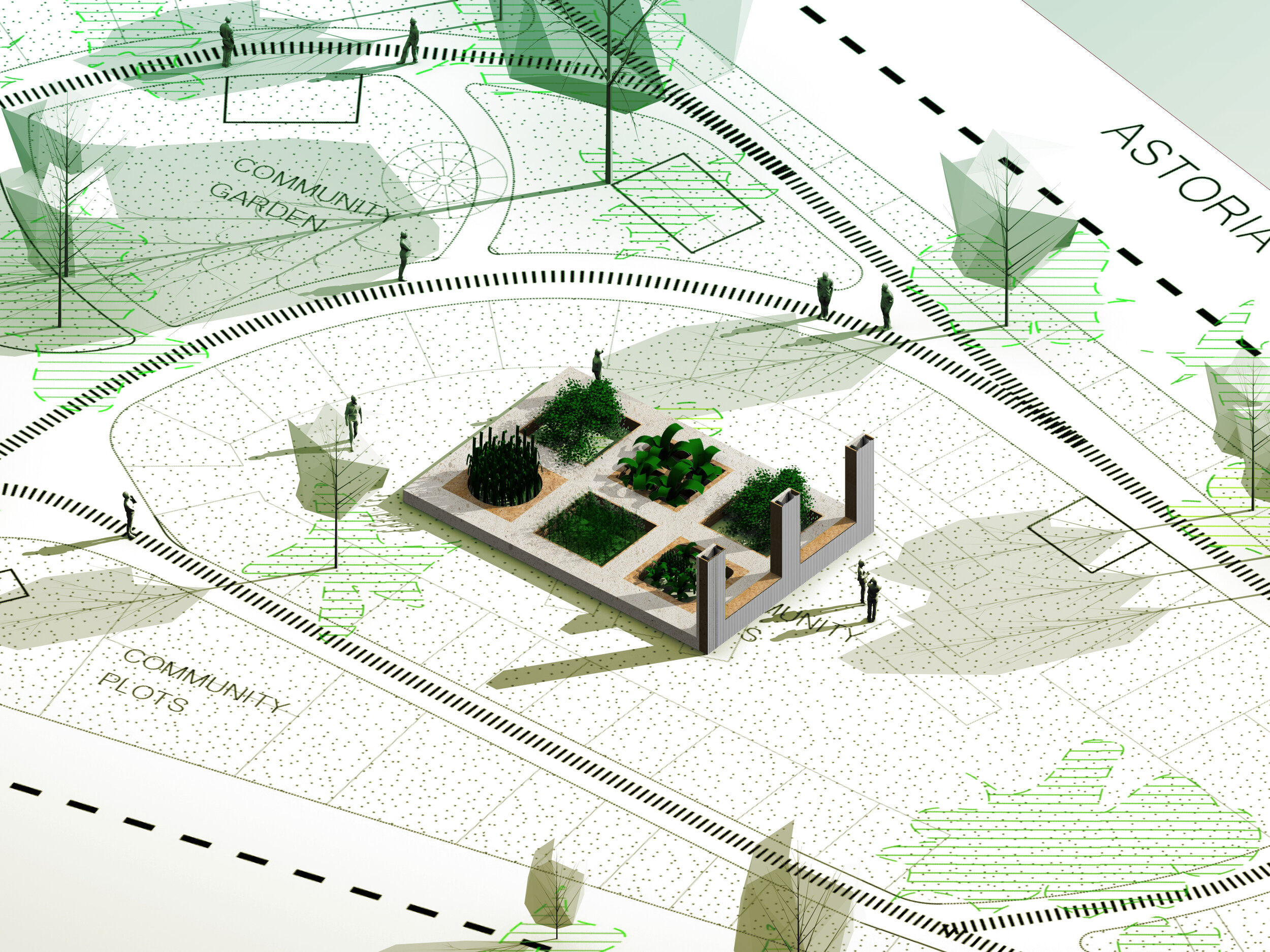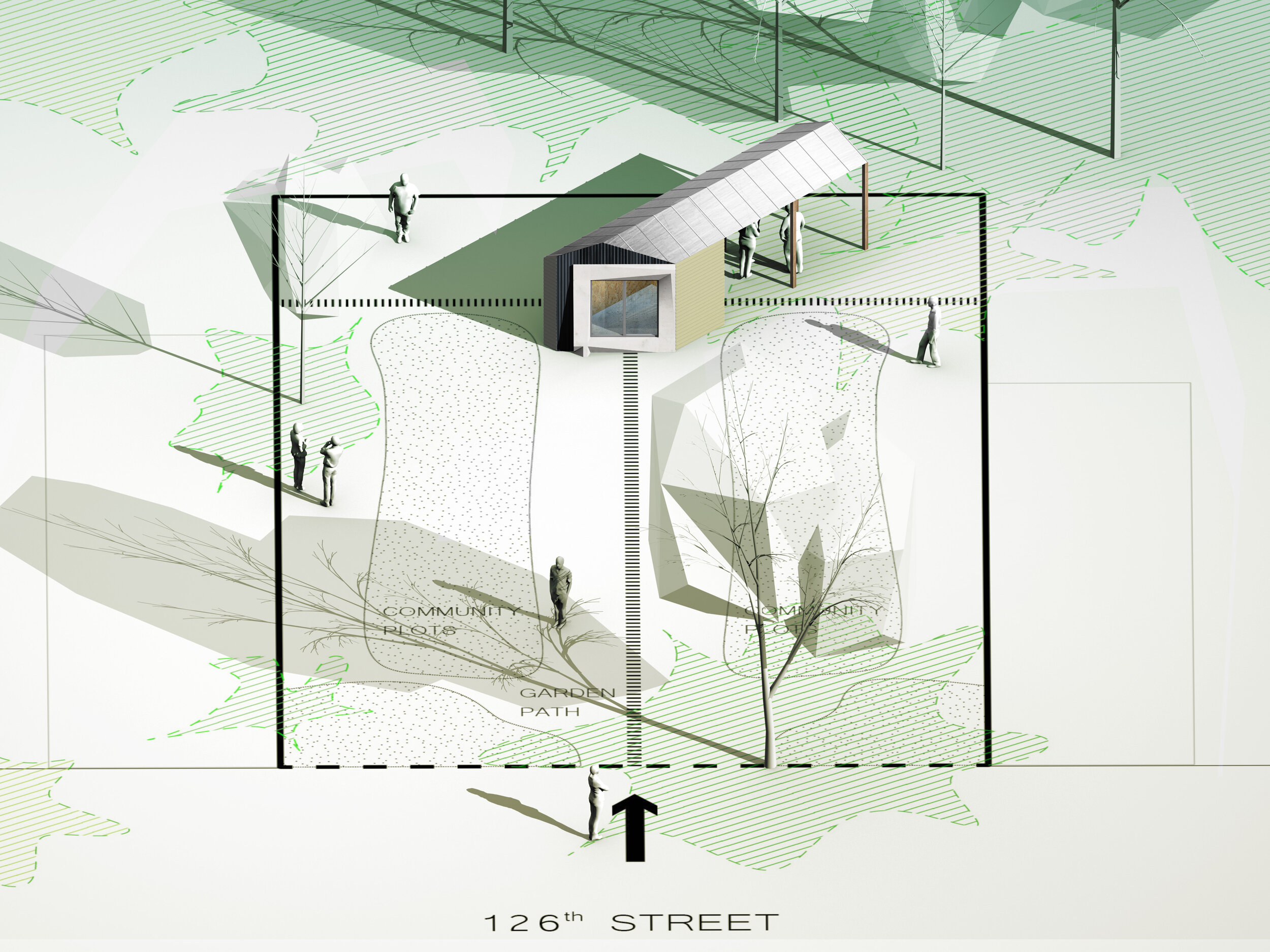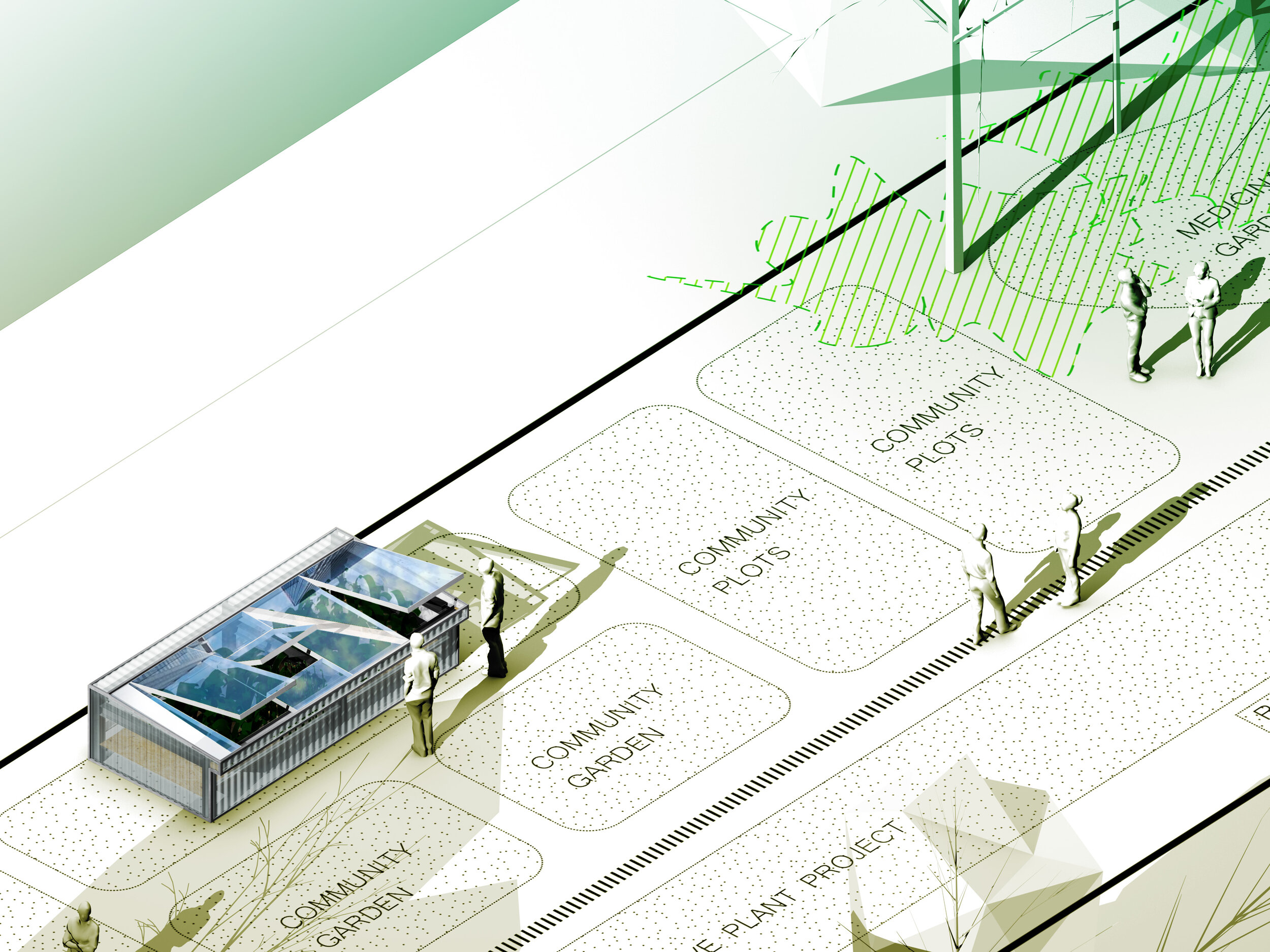Testbeds began with an observation: the process of architectural design creates a lot of unexpected waste streams and byproducts. We were struck by one such example: architectural mockups, which are built to test the visual and performance qualities of a building assembly.
Mockups are typically built out of the same materials as the eventual building that they model. They are both expensive and well-crafted, but also short-lived. They typically serve the purpose of a single design review before they are discarded.
At the same time, we began to look more closely at small structures in community gardens in our neighborhoods.
These include greenhouses, casitas, toolsheds, cold frames and shade canopies, which are oftentimes in need of repair. We noticed a correspondence of scale between these two architectural types and began to consider their unlikely substitution.
By relocating mockups to local community gardens, we imagined a new form of Manhattan transfer. Here the mockup becomes a vehicle, carrying the surplus value of New York’s high rise architecture into neighborhoods that have been historically disinvested.
What new uses could these mockups provide once they are transplanted to community gardens?
Our initial speculations helped us to consider both the variety of mockups and gardens and their possible combinations. When we were donated our first mockup, we could quickly imagine how it might work in a garden structure, leading us to complete our pilot project at the Garden by the Bay in Queens.
